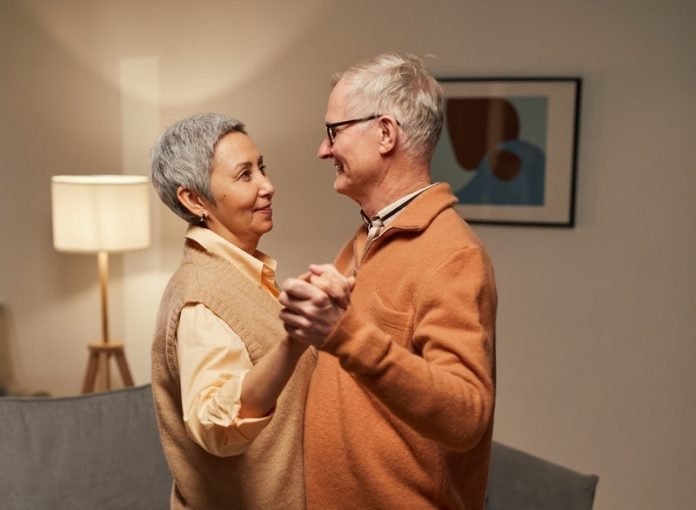
In a new study, researchers found patients with mild-to-moderate Parkinson’s disease (PD) can slow the progress of the disease by participating in dance training with music for one-and-a-quarter hours per week.
Over the course of three years, this activity was found to reduce daily motor issues such as those related to balance and speech, which often lead to social isolation.
They found people with Parkinson’s who participated in weekly dance training, had less motor impairment and showed significant improvement in areas related to speech, tremors, balance and rigidity compared to those who did not do any dance exercise.
Their data showed big improvements in experiences of daily living, which include cognitive impairment, hallucinations, depression and anxious moods such as sadness.
The goal of the research was to create a long-term rehabilitation strategy to combat the symptoms of PD.
In the study, researchers looked at how a multi-sensory activity, (like a dance with music learning) incorporated the use of several sensory modalities in the dance environment including vision, audition, tactile perception, proprioception, kinesthesia, social organization and expression, olfactory, vestibular and balance control — may influence many of the mood, cognitive, motor and neural challenges faced by people with Parkinson’s.
Researchers followed collected data from these patients over three-and-a-half years.
In the study, 16 participants with mild-to-moderate PD with an average age of 69, were tested between October 2014 and November 2017.
Each participant took part in a 1.25-hour dance class. Dancers participated in dance exercises that provided both aerobic and anaerobic movements.
This group was then compared to 16 non-dance Parkinson’s participants (the reference group)
Classes began with live music accompaniment during the seated warm-up, followed by barre work, and ended with moving across the floor. All participants learned choreography for an upcoming performance.
The team says dancing is a multi-sensory type of environment. It incorporates and stimulates your auditory, tactile, visual and kinesthetic senses and adds an interactive social aspect. Regular exercise does not offer these aspects.
Researchers will next examine what occurs in the brain immediately before and after a dance class to determine what neurological changes take place.
If you care about Parkinson’s disease, please read studies about how to accurately detect early-stage Parkinson’s disease and findings of the real cause of Parkinson’s disease may be in the gut.
For more information about Parkinson’s and your health, please see recent studies about this one-time treatment may eliminate Parkinson’s disease and results showing that this good habit may help you reduce risk of Parkinson’s disease.
The study is published in Brain Sciences. One author of the study is Joseph DeSouza.
Copyright © 2021 Knowridge Science Report. All rights reserved.



